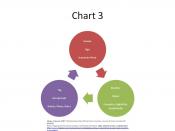A new social network startup, Friendster.com, is one of the most promising new Internet companies, founded by Jonathan Abrams. Social networking has shown a lot of promise, with other startups, such as LinkedIn, Spoke and Tribe Network, being backed by large venture capitalist firms pouring out a lot of money, almost $ 40 million.
Almost five million Internet users have accessed Friendster, but surprising enough, Friendster hasn't made a cent in revenue. What makes Friendster different from previous Internet companies, is it's no frills approach: small offices and no marketing or public relations budget. Friendster had avoided taking venture capitalist's money for the first year, but now that they have accepted the $ 13 million dollar investment, those qualities that made them different have long since disappeared. And, although they haven't spent any money on advertising, the founder, John Abrams says, " I don't think many social networking companies besides Friendster are going to achieve a lot of traction, we're a year old, and we've spent zero dollars on advertising, and in a year or less, we'll be bigger than them - it's a given."
Friendster hopes to go up against other similar sites, like Match.com, but will allow their users to utilize their site for free, only paying for premium services, and also want to add some "value added" services, such as job referrals and classmate searches. Google.com, who tried to buy Friendster last October for $30 million, has launched their own social networking site, Orkut, which is a potential threat to Friendster. With the 20 something crowd being very faddish, its has been said that Friendster may have already reached their peak, but John Abrams is undeterred and confident, knowing that a good
exit strategy for Friendster is being acquired by a larger company, and "cashing out."
Friendster.com is a privately owned company, that was founded by Jonathan Abrams in 2002, and is backed by venture capitalists Kleiner Perkins Caufield & Byers, Benchmark Capital, Battery Ventures, and various individual investors. The reason why Friendster was invented was that, "In real life, people meet each other
through their friends," Abrams said. "I felt a demand for these type of services and wanted to help people meet new people, but there was room for a new approach."
Some unexpected problems for the future of Friendster is the fickleness and loyalty of its 20 - 30 something aged users. Also, the fact that it hasn't generated any revenue
should be a major concern for them as well. Speed is also a major issue. When using Friendster, their server speed is compromised, with so many users, their system tends to
get bogged down, and slows down the service tremendously.
Friendster market structure is an oligopoly, with a few number of similar firms, selling identical or differentiated products. Friendster has a few competitors, such as Match.com, LinkedIn, Spoke and Tribe Networks. Since the cost of startup and early operations can be expensive, without venture capitalist backing, entry into this market structure can be difficult, and difficult entry is a main characteristic of an oligopoly.
Creative destruction is defined as where the creation of new products and new production methods simultaneously destroys the monopoly market positions of firms
committed to existing products and old ways of doing business. I think that Friendster could become a victim of creative destruction, and has caused other companies to become victims as well. Other social networking companies do exist, but Friendster has taken a spin. They don't just let a user search for a mate with similar interests, Friendster lets you connect with friends, and connect with their friends, and then connect with their friends. They call it the six degrees of separation - social networking. By differentiating themselves from the other "match makers," Friendster has given themselves an edge, and by doing that, may have edged other companies out by luring their users to the Friendster site. Eventually, another company may try to bypass Friendster by offering a new and more exciting service, and that may cause Friendster to become a victim of creative destruction, just as they have done to others.
Bibliography
What's Friendster Selling?, John Heilemann, Business 2.0, March 2004, page 46.
Economics, Principles, Problems, and Policies, McConnell & Brue, page G-5.
Friendster.com parlays the power of Grassroots Networking, by Janet Pak,
www.detnews.com, August 4, 2003.


